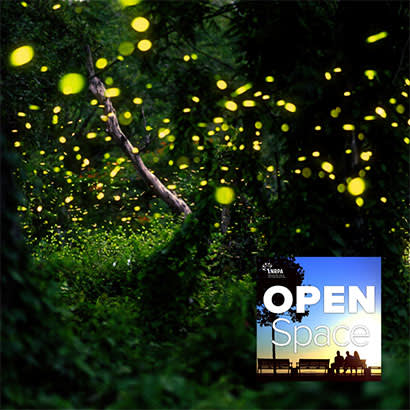
Disclaimer: Today’s episode was previously recorded and focuses on how parks can help save fireflies, which is the cover story of the April issue of Parks & Recreation magazine. We recognize some of the topics discussed on this episode are more difficult to implement at this time during the COVID-19 pandemic, but we hope you find the topic interesting and that it will give you some ideas for the future. If nothing else, you'll learn some fascinating facts about fireflies! We also want you to know that NRPA is actively monitoring developments around the current COVID-19 pandemic and how it is impacting parks and recreation — head to our Coronavirus Disease 2019 (COVID-19) web page for the most up-to-date information on our response, as well as resources from NRPA, health organizations and federal agencies.
The April issue of Parks & Recreation magazine is out now, and on this bonus episode of Open Space Radio, we’re diving deeper into the feature article, “Can Parks Help Save Fireflies?” We’re joined by the author, and editor-at-large for Parks & Recreation, Richard J. Dolesh, as well as Michele White, an NRPA conservation program manager, to talk about the current threat to the firefly species. And, whether you call them fireflies or lightning bugs, one thing is certain: they need our help.
There are about 2,000 species of fireflies worldwide, and approximately 170 species are found in the United States. Currently, the greatest threats to these species are loss of habitat, light pollution and the use of certain pesticides, but there are ways that parks can become more “firefly friendly” and help save the future of these species. On this episode, we discuss some current projects in parks around the country that are helping educate the public about fireflies, as well as some things that parks can do to help stifle the threat to the species, including:
- Mowing grasslands and meadow habitat in rotational strips or a mosaic pattern (this is great for pollinators, too)
- Creating more meadows and more edge habitat, and leaving a grass buffer strip around forest edges
- Trying to create more moisture year-round, if possible.
- Planting green infrastructure areas with pollinators and fireflies in mind
- Leaving forested areas natural — allow for more leaf litter and leave downed trees in place, as this is where firefly larvae are typically found
- Evaluating your outdoor lighting and reducing light-spread, if possible, in high-quality habitat areas
Of course, thinking of fireflies tends to bring a sense of nostalgia, so Rich and Michele each share some of their earliest memories and discuss how the joy of seeing fireflies is often a person’s first vivid memory of connecting with nature. And while the days of running around trying to catch fireflies in mason jars may be behind us (it is strongly advised against, nowadays), we talk about how there are still safe, responsible ways to appreciate our illuminated friends of the night. We also talk about how educating kids about fireflies can be a great catalyst for starting a lifelong appreciation of the outdoors and relationship with nature.
Other useful resources discussed in this episode:
Parks for Pollinators BioBlitz
International Dark Sky Association
Conserving the Jewels of the Night
Listen to the episode for the full story.
You can also listen to Open Space Radio on Spotify, Stitcher, iHeartRadio and other podcast services.



